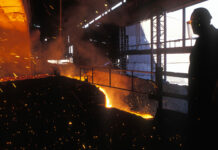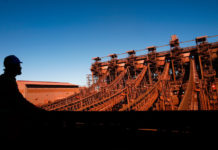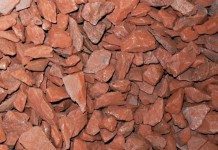
[miningmx.com] – MERAFE Resources (Merafe), a JSE-listed ferrochrome
producer in joint venture with Xstrata, said it was optimistic that Government would
implement an export duty on unbeneficiated chrome ore before the year-end, and that
it would also consider a “control mechanism’ stemming chrome-ore exports in the
long term.
This comes amid clear signs that China is eating into South Africa’s market share of
ferrochrome output. During 2011, for instance, global ferrochrome supply was
unchanged – but South Africa’s share fell 9% while China’s increased 13%. The two
markets combined comprise three-quarters of total ferrochrome supply.
Over a longer time frame, South Africa has dropped from about 50% of world market
supply to 42% between 2001 and 2010, whereas China has grown market share to
25% from 5% over the same period.
Chrome ore is the unbeneficiated form of ferrochrome, and its export falls foul of
Government wishes that South Africa stop exporting ore in favour of adding value to
minerals, in an effort to create jobs and industrialise the country’s economy.
Stuart Elliot, CEO of Merafe, said on the sidelines of the company’s full-year results
presentation (in which Merafe posted a decline in profit to R117m from R279m in the
previous year), that South Africa’s ferrochrome industry contributed R45bn to gross
domestic product, and employed 200,000 people directly and indirectly.
“Do we want a very old industry in South Africa to fail? Because that is what’s at
stake,’ said Elliot.
As a permanent solution, he called for a control mechanism that would limit the
amount of chrome ore flowing out of the country. “We are encouraged by our direct
communication with the Minerals Resources Department and the National Treasury,’
said Elliot. “We know our views coincide with Government’s beneficiation strategy.’
In the shorter term, an export duty of about $100 per tonne of chrome would increase
import costs of buyers. “The whole objective of that is to give us breathing space by
raising the cost of production,’ he said.
The South African Government has set down 10 areas where value can be added to its
industrial production.
ESKOM
Elliot said he was optimistic for the new financial year. This comes despite the
likelihood that ferrochrome production would be sharply lower following an agreement
to shut five furnaces, owned by it and joint venture partner Xstrata, for three-and-a-
half months from February 18.
Ferrochrome output is also scaled back during the winter months when Eskom applies
a higher tariff on intensive energy users. However, Zanele Matlala, Merafe’s CFO, said
the company had sufficient inventories to supply clients.
Elliot added that the decline in ferrochrome production in South Africa – estimated by
Merafe to be 30% of total country capacity owing to the Eskom power buy-back
programme – would also tighten supply, which would be positive on prices.
Nonetheless, Merafe elected not to pay a dividend. Matlala said market conditions, as
well as debt levels and capital calls on its expansion projects over the next 12 to 24
months, informed the decision. Cash resources at Merafe fell R100m to about
R220.5m as of end-December owing to expansion projects.
Merafe is required to contribute R2.54bn between now and 2013 on three projects.
The largest of these is the R1bn Lion II smelter programme, in which some 360,000
tonnes/year in ferrochrome smelting capacity will be created in addition to the
commissioning of the Magareng chrome mine.











